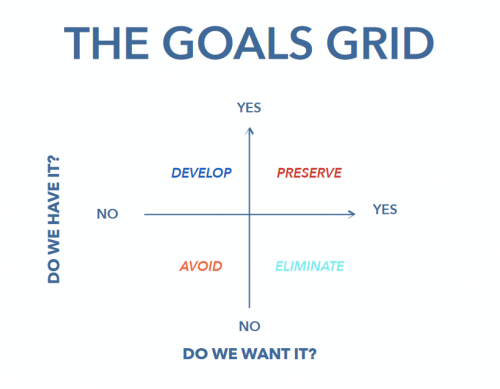
After the reset, then what? We reset the management team and cleared the air using the workshop framework I described in my previous blog post.
Now, the question is what is the one thing we could start doing immediately, that would help us grow stronger as a team. In my view, the obvious answer is to learn how to we deal with setbacks and mistakes. The crucial move is from holding people responsible to everyone taking responsibility.
This may sound theoretical but is not, we can learn how to do that by one simple shift in our behaviour as a team. We need to develop and integrate the practice of the After Action Review, not in the form of the occasional event when something has gone wrong but as a natural part of how we finish ‘things’. The job is not complete until we have not done an after action review.
But nor is the week, the month or the year for that matter. We need to develop a different approach, a culture of not rushing into the next ‘thing’ before we have finished digesting what we just accomplished.
The format of the After Action Review can vary and if you google the term, you will see many more or less complex versions. My favourite fast and dirty is to grab a flip chart, napkin or whatever I can find to write on, I draw this:

Then I ask the team “So what went well (today, this project, or whatever we are wrapping up)?” That goes in the square labelled ‘Preserve’. Here we list things we are happy with, things that went well or even beyond our expectations. Practices worth learning from.
What do we need to get better at or develop in the future? Here we list things that did not go according to plan or turned out different than what we expected. We are not trying to place blame, only to identify what needs to change next time. Think of more as a feedforward than a feedback. Whatever comes up goes into the square ‘Develop’.
What did we do that we wish we had not done? I.e. what should we stop doing in the future? This is a great place for the individual mea culpa. I screwed up and I will try not to do it again, or maybe we all screwed up. What counts is the conversation about how are we going to avoid that in the future. Those items go the square marked ‘Eliminate’.
And finally, I ask what are we happy that we avoided today. Maybe last time we promised each other to keep tempers down even when things get tricky and today we manage to do that, yea! And that goes onto the last of the four squares.
This process can take 10-15 minutes at the end of a shift or it can take a full morning at the end of a larger project. When doing it this way, we create a relatively safe space for everyone to voice their views and opinions. It helps us clear up any friction or misunderstanding that might have arisen during the heat of the action.
Once we develop the habit of doing this as a regular practice, we have also taken the first step toward a more open and honest feedback culture. A culture with a focus on fixing things and learning from our mistakes. It’s a shift away from problem focus and towards to a solution focus. It is a goodbye to the drama triangles.
You can try it out very quickly at the end of your next management team meeting as: “So let’s just do a quick review of how we hold meeting with each other…”, you grab the flip chart, draw the model and ask the question. Easy, you are off to a new start.






